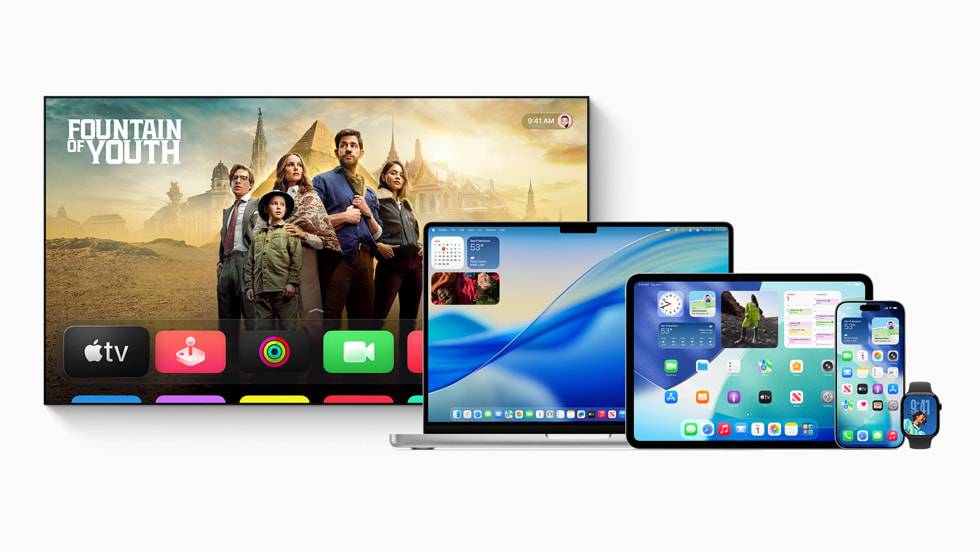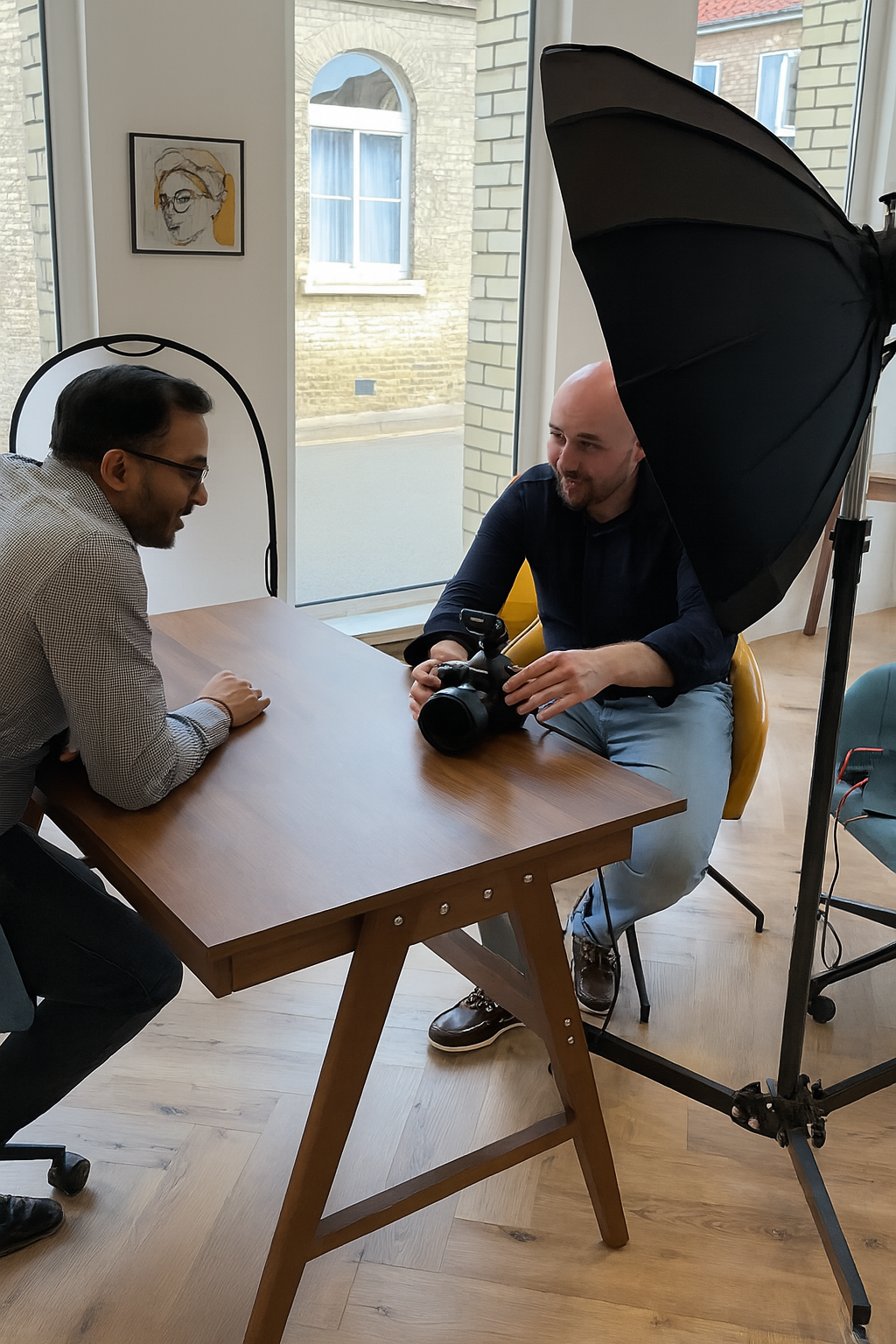Do big companies really need agencies for marketing?

The real question behind the question
“Do big companies really need agencies?” usually isn’t about agencies. It’s about control, pace, cost, and trust. If you have a brand that’s built on story, nuance and a very particular voice, the instinct is to keep everything in-house. If you have a product to launch in six weeks and six markets, the instinct is to get on the phone and find a team that can put fifty specialist brains on it by Friday. Both instincts are right. Both instincts can be wrong. The trick is knowing which one is which today, in the real economy, for your team, with your board staring at a dashboard and asking why the line goes sideways.
Right now the UK ad market is large, restless, and digital to its bones. That means your internal team is already competing with specialist agencies on everything from data layering to creative performance across platforms that change more often than the manager at Norwich City Football Club. If that sounds exhausting, that’s because it is.
What in-house teams do better, and why that matters
In-house teams live the story every day. They sit in the meetings where the product got delayed because a part supplier fell over, they hear how customers actually talk, and they pick up the little cultural things that never make it into a brief. That lived context is gold. It is why, when a brand’s business model depends on a particular voice, on long-term relationship building, on careful community management, an embedded team usually writes and steers the story more convincingly.
There is another practical reason. Decision-loops are shorter when the team sits in the same building. Getting the legal review, the regulatory check, the product manager’s tweak, all happens without booking a formal checkpoint. That is hard to beat on complex, sensitive categories, or where your comms have to sync with operations.
Of course, the flip side is that in-house teams can sometimes become blinkered. They live so close to the brand they stop spotting the fresh angle. They can over-protect story at the expense of reach. And they can lose speed when firefighting BAU comms eats the time that should have gone on campaigns.
What agencies do better, and when speed beats comfort
Agencies don’t live your story. They live speed, scale, and sharp practice in the best sense of that phrase. They stack specialists. Need a paid search crew who have seen every edge case? A CRO lead who has broken and rebuilt more checkouts than you knew existed? A creative director who can write a line that cuts across YouTube, radio, and a brutal six-second skippable format? That is agency bread and butter.
The UK numbers support this reality. Digital spend continues to absorb the lion’s share of budgets, with search and online display accounting for the bulk of growth, which means the rulebook changes mid-campaign and sometimes mid-week. The more volatile the channel mix, the more valuable the bench of people who live inside those platforms.
There is also the simple reality of freshness. Agencies see more briefs, more categories, more failures, more wins. That cross-pollination produces creative that travels and strategies that avoid obvious traps. The IPA’s effectiveness work points to creativity and long-term brand building as key drivers of profit, and the best case studies are full of teams who tested more than one way to skin a cat.
Yes, agencies cost. But they also compress time. They’ve made the mistakes already, on someone else’s budget. They’ve built the playbooks. They can bring twenty brains to a campaign your internal team of five just doesn’t have the headspace to run.
The hybrid model that quietly wins more often than not
Most of the best setups I’ve seen look like this. Strategy and story sit inside the company. Execution flexes. When there is a campaign, when there is a migration, when there is a new product with a silly timeline, an agency or two provide the extra engine. That keeps authenticity anchored, while the moving parts move with the right pace.
At Temple Brown, this is exactly how we work. Every engagement begins with our Discovery Process: a structured workshop where we dig into your goals, surface assumptions, and get crystal clear about what success really looks like. We run it collaboratively, because the best plans aren’t written by one person at a whiteboard but hammered out by people with different skills looking at the same challenge from different angles.
From there we move into our round table approach. Instead of leaving you with a single account manager, we bring a team of designers, developers, strategists, and marketers to the table. You get all of that professional insight bundled into your project. It means you’re not paying for one or two hires…you’re getting the pooled expertise of a whole group of specialists, at a price that usually works out better than trying to build the same bench internally.
The UK Government Sourcing Playbook calls this make, buy, or blend. Translate that to marketing and you get something perfectly sensible. Keep the crown jewels inside. Buy spikes of skill and scale. Blend where the line is fuzzy.
How big is big: budgets, bandwidth and Britain in 2025
“Big enough to build in-house” sounds obvious until you look at skills, not headcount. The CIPD skills survey shows plenty of enterprise brands are permanently short of crucial disciplines, and hiring them in the current market is… character building.
This is also where our Discovery workshops make a difference. They help big companies see whether their existing headcount really covers the gap, or whether borrowing a multi-skilled team from outside delivers more value for the same spend.
At the same time, Ofcom’s Media Nations shows how online video and platforms like YouTube take a growing slice of attention across ages. That’s another nudge toward partners who spend all day inside those platforms.
The other question is bandwidth. Even if you could hire the talent, can you hire it fast enough? Agencies can onboard and scale far quicker than HR cycles. That’s why they win sprints, while in-house wins marathons.
Norwich and Norfolk realities: talent, time, and tea breaks
Let’s be honest about geography. Norwich is not short of talent, but it is short of endless benches. If you’re a regional head office with a marketing team that covers brand, content, CRM, website design and development, paid media and PR, you’re already juggling. When a campaign kicks off at the same time the website needs support and the board wants three new dashboards, your choice is overtime or outside help.
And when the pressure is on, our collaborative round table isn’t just a slogan. It means you’ve got a team pooling design, content, and technical firepower rather than scrambling to hire three different people at once. That’s the difference between paying for capacity and paying for capability.
Norwich companies also have another reality: if you want to play nationally, you’ll need exposure and reach your in-house team might not have. That’s where the blend of local grounding and external acceleration comes into play.
Who you are up against: a quick, honest look at local agencies
Norwich has agencies with proper chops! Affinity pitch themselves as integrated, Selesti lean on strategy and their B Corp status, Fountain Partnership emphasise forecasting and optimisation, Nu Image tell Norfolk growth stories, Yawn handle strategy-to-delivery, and Gravity Global bring network heft.
What does that mean for you? You can and should be picky. If you need scale, pick the people who show you theirs. If you need craft, pick the people who show you how they protect quality at pace.
The competition is healthy. But it also means you need to know what makes your agency partner distinct. At Temple Brown, our answer is simple: Discovery first, then the round table, so you get a plan that fits and a team that can flex.
Where Temple Brown fits, and where your sitemap has gaps
Temple Brown already talks websites, social media, branding, photography, and website support. What isn’t as obvious until you sit with us is how we work. Every project runs through Discovery first, and from there we staff it collaboratively, pulling the right mix of skills for the job. That’s the bit your sitemap doesn’t say loudly enough: when you hire Temple Brown, you don’t just get one or two heads…you get the whole table.
Case study one: the story-led in-house team that borrowed agency firepower
A national charity came to us with a familiar tension. They had a strong in-house comms team, brilliant at community, brilliant at voice, brilliant at internal alignment. What they did not have was the capacity to build a campaign across paid social, search, landing pages and measurement in a six-week window that overlapped with their annual report.
The plan we built together kept story in-house. Their head of comms owned the message, owned stakeholder sign-off, owned the media line. We built the sprint engine. Our team handled campaign architecture, created an integrated landing experience in Webflow that mirrored their brand language, produced modular creative for skippable formats and short-form video, and set up lightweight dashboards that reported on the things the trustees actually cared about.
That build came directly out of Discovery, where we mapped which parts of their story had to stay in-house and which parts could be safely handled by our round table crew. They didn’t pay for a lone freelancer. They got a structured team who moved together, and the results showed it.
Case study two: the East Anglian manufacturer that scaled with a hybrid
A Norwich-based manufacturer had a small but sharp internal team. They were excellent at trade relationships, strong on content for partners, and had a website that did a decent job of existing. Growth targets changed. The board wanted national reach into new verticals, which meant performance media, a refreshed site that could handle multi-segment journeys, and creative that felt less brochure, more buyer-led.
We kept the manufacturer’s voice in-house. Their marketing lead ran the message framework. We handled the rebuild, moving the site from a slow, dated stack to a lighter, faster build with a proper CMS, and we paired that with a three-month burst of paid search and social to seed demand while organic caught up.
Here again, Discovery made the difference. Their board thought they needed to hire more permanent staff. In reality, our collaborative round table gave them access to design, build, and performance marketing all at once, without adding three new salaries. It saved them money and stress, and the campaign landed on time.
A practical decision framework you can actually use
If you want a neat answer, here it is. If your brand really is story-driven and relationship-heavy, keep the centre of gravity inside. If you have a campaign, a product push, or a rebuild that needs doing at pace, bring in an agency for the spike. If you have both problems at once, run a proper hybrid and write down who owns what.
Think in terms of what must never be wrong, what must be done quickly, and what must be done by somebody who has done it a hundred times. That’s the triangle. Put each workstream in its corner and staff it accordingly.
Governance, procurement and how to avoid the classic mess
Public sector or large private procurement sometimes tie themselves in knots over marketing because they treat it like stationery. It’s not. You cannot buy a story the way you buy a stapler. But you can make sensible sourcing decisions. The government’s Sourcing Playbook frames it simply: make, buy, or blend, based on risk, capability, and value.
That’s worth remembering if you’re trying to decide whether to keep adding to the in-house headcount or lean into a flexible hybrid.
Measuring effectiveness without losing your marbles
If you’re running a hybrid, measurement is where things go wrong if you’re careless. You will need a single truth for targets and performance. Agree the outcomes, not just the outputs. If sales is the outcome, agree the windows, agree the attribution, and agree how long creative and brand should be allowed to cook before they get blamed for everything.
The IPA’s effectiveness work tells you two things: strong creativity drives disproportionate returns, and long-term brand work pays off even when the quarterly reports make you itchy.
FAQs
If we are a large UK brand, should we default to in-house for everything?
Not always. While in-house teams are brilliant at protecting brand voice and managing daily communications, they rarely cover every specialist skill you need in a fast-moving digital landscape. From technical SEO to AI-powered analytics and programmatic advertising, agencies often bring expertise you can’t recruit quickly. A hybrid model lets you keep strategy close and outsource execution spikes without diluting authenticity.
Does using an agency mean we lose control of our brand?
No, not if the relationship is managed properly. Agencies like Temple Brown run Discovery workshops to lock down brand guidelines, tone, and strategic priorities. Once those are agreed, execution scales without compromising your identity. Think of it as extending your in-house team, with additional AI tools and marketing tech you don’t have to invest in directly.
Are agencies just more expensive headcount?
It looks that way on a spreadsheet until you factor in speed, efficiency, and tools. Agencies spread the cost of premium SEO platforms, AI content optimisation tools, and data analytics systems across multiple clients, meaning you get enterprise-grade capability for a fraction of the price. One in-house salary won’t give you access to an entire professional round table with those resources already embedded.
When should work stay in-house?
Storytelling, regulatory compliance, and customer-facing comms often belong inside the business. Your employees live the story, which gives them authenticity that no external partner can replicate. Agencies should complement this by handling specialist areas like AI-driven keyword research, technical SEO, or rapid campaign builds where your team lacks time or bandwidth.
When should we use an agency?
Agencies excel when you need speed, scale, or niche expertise. Launching a new product, optimising for voice search, or deploying AI-driven personalisation across multiple channels is tough for small in-house teams. Agencies already have the frameworks, cross-industry experience, and tech stack to get it right first time.
Do hybrid retainers work?
Yes, and they’re increasingly popular. A hybrid retainer gives you access to ongoing SEO monitoring, AI-powered insights, and flexible campaign delivery without tying up unnecessary budget. It’s a best-of-both-worlds approach: keep brand story in-house, outsource technical SEO, content optimisation, and paid media when you need it.
Is there UK evidence that creativity and brand building pay off?
Yes. The IPA Databank consistently shows that emotionally engaging creative campaigns deliver stronger long-term ROI. Pairing this with modern SEO and AI-driven targeting ensures that creativity doesn’t just resonate emotionally but also surfaces in search results where customers are looking.
How do we measure agency performance?
Forget vanity metrics like impressions. Measure on business outcomes: organic search growth, leads generated, cost per acquisition, and share of voice in SERPs. Agencies like Temple Brown use dashboards powered by AI SEO tools to give you real-time performance indicators, ensuring your marketing investment is tied to measurable growth.
Does location still matter for agency choice?
Yes and no. In Norwich and Norfolk, being local gives you cultural alignment and face-to-face access. But AI-powered collaboration tools mean agencies can deliver national campaigns with equal efficiency from anywhere. The sweet spot is often local agencies with national-level expertise – rooted in your community but fluent in the broader digital ecosystem.
Are there UK skills shortages that justify agency use?
Absolutely. The CIPD skills survey highlights gaps in digital, data analytics, and AI marketing skills. Hiring and training in-house takes time. Agencies already employ specialists across SEO, paid media, CRO, and AI content strategy – letting you skip the hiring lag and move straight to results.
How do we keep agencies aligned to our tone of voice?
Document everything. Provide clear brand guidelines, examples of best-practice comms, and run calibration sprints where agencies test content against your standards. Agencies with in-house AI tools can also analyse your existing content to learn tone, structure, and style, creating a digital “voice fingerprint” that keeps messaging consistent across all channels.
Which contract clauses avoid drift?
Be explicit. Define scope, approval processes, reporting cadence, intellectual property rights, and knowledge transfer requirements. Ask for clear metrics on SEO and campaign effectiveness, and include provisions for auditing AI-driven recommendations so you understand how automation supports the strategy.
What if budgets are tight?
Hybrid is your friend. Keep essential functions like customer comms in-house and use agencies surgically for SEO audits, AI-driven keyword research, or campaign bursts. That way you avoid bloat while still unlocking tools and expertise you couldn’t afford to build internally.
How long should we give a new agency to show results?
Set realistic windows. With SEO and AI-assisted content optimisation, expect to see movement within 8–12 weeks, but give six months for significant organic growth. Paid campaigns deliver faster, but the real measure is blended performance across multiple channels, not just one burst of activity.
Is there public guidance that frames make, buy or blend?
Yes. The UK Government’s Sourcing Playbook recommends make, buy, or blend decisions based on risk, capability, and value. Apply the same logic to marketing: keep core brand strategy (make), outsource technical SEO and AI optimisation (buy), and share execution responsibilities (blend).
What is Temple Brown’s Discovery Process and why does it matter?
Discovery is our structured workshop at the start of every project. It surfaces assumptions, maps priorities, and aligns teams on outcomes. It’s collaborative, not prescriptive – meaning you walk away with clarity on what stays in-house and what we’ll accelerate with our round table team. This avoids wasted spend and ensures your SEO, AI insights, and creative strategy all pull in the same direction.
What do you mean by “round table” approach?
Rather than handing your account to one or two generalists, we staff projects with a collaborative round table of specialists. That means you get designers, developers, SEO experts, and AI strategists weighing in where they add value. The result: campaigns that are faster, smarter, and more resilient than relying on a single hire – and you don’t have to shoulder the cost of multiple full-time salaries.
What to do next
If you’re weighing in-house versus agency and don’t fancy another circular meeting, we’ll help you map a hybrid that keeps your story in-house and gives you the speed you need. Start with a short Discovery call, then a tidy plan that sets the roles, the guardrails and the timelines.
Explore our Web Design and Development, Website Support, or Social Media pages to see how Discovery and our round table model slot into your marketing. Or head straight to our Contact page, drop us a note at hello@templebrown.co.uk, or give us a ring on 01603 369923. The kettle will be on, and the first question will be about your customers, not our portfolio.
Featured Project
Check out our insights
Check out all of our new articles!






